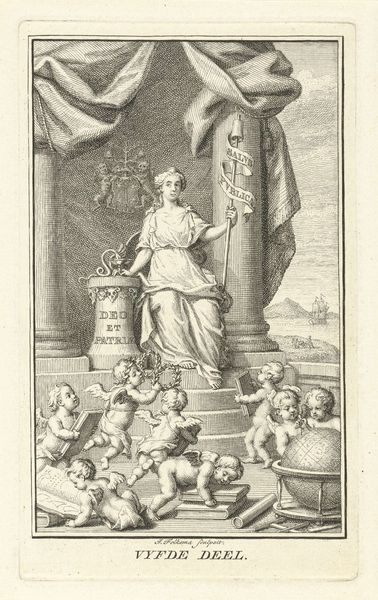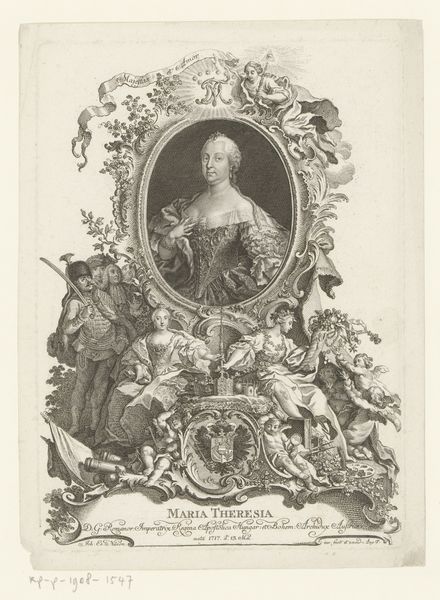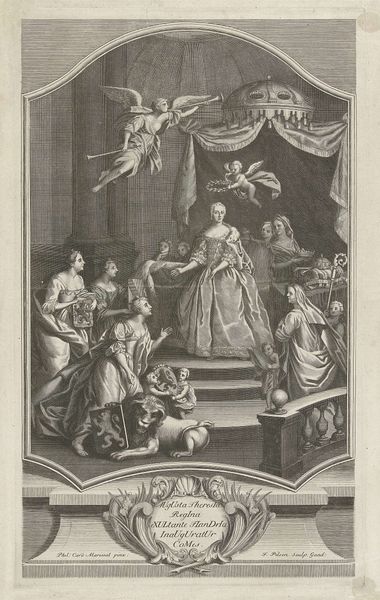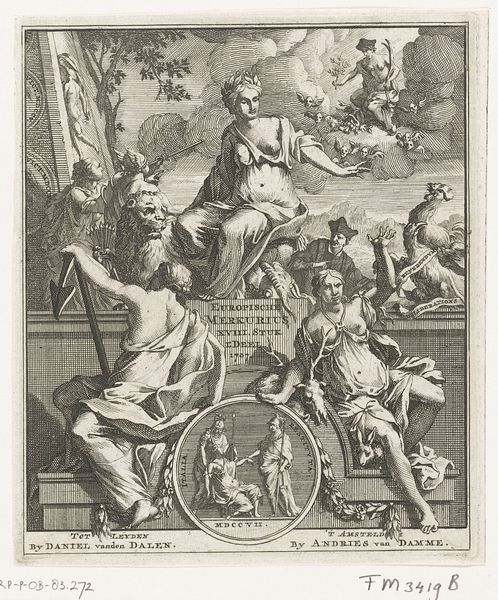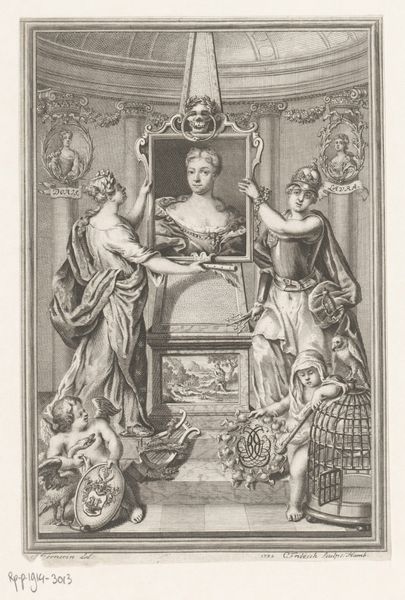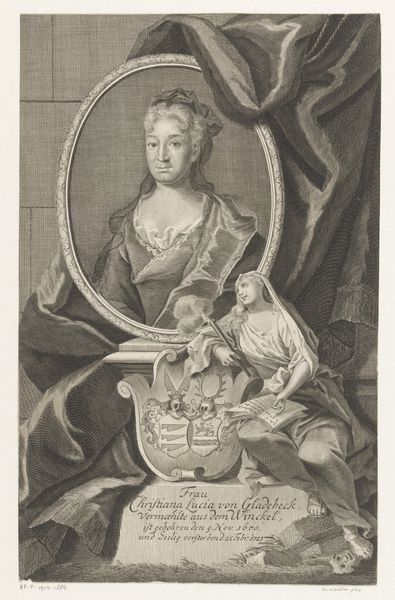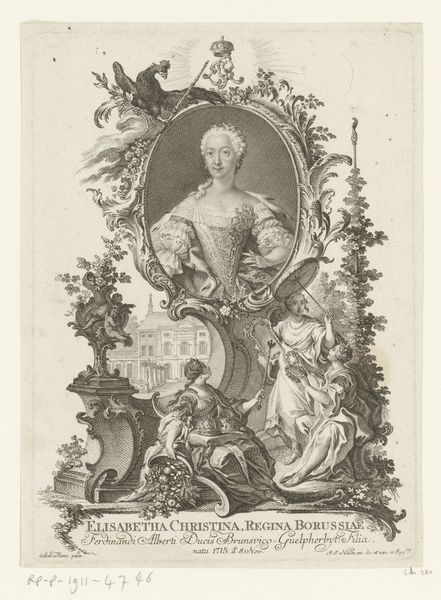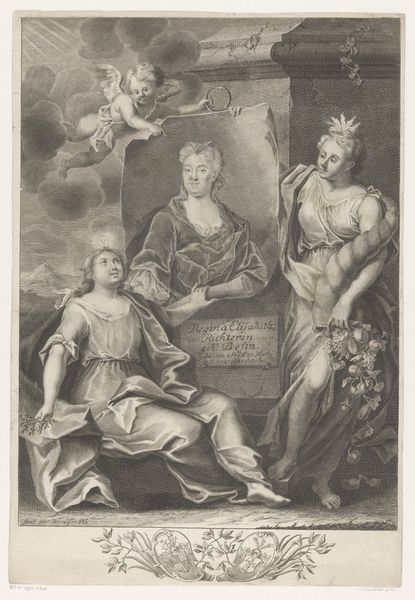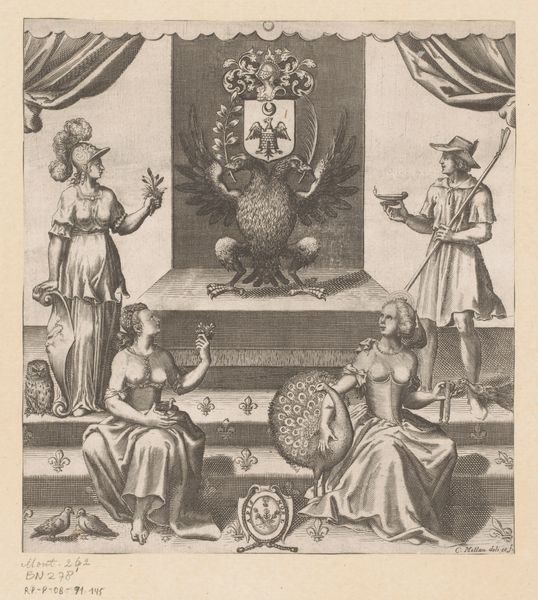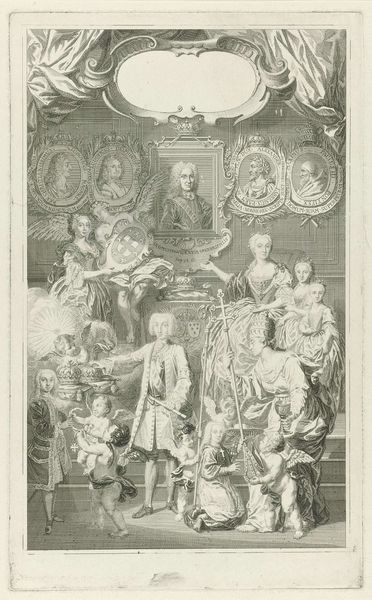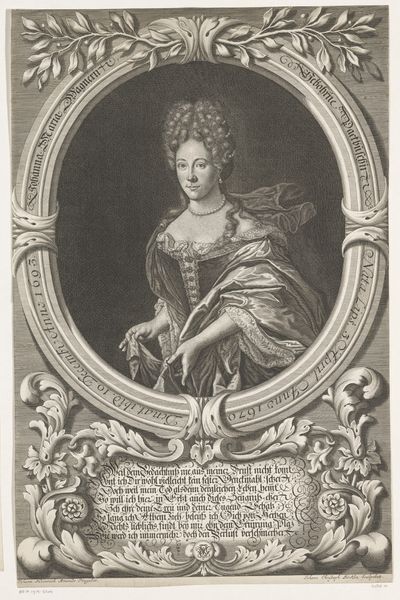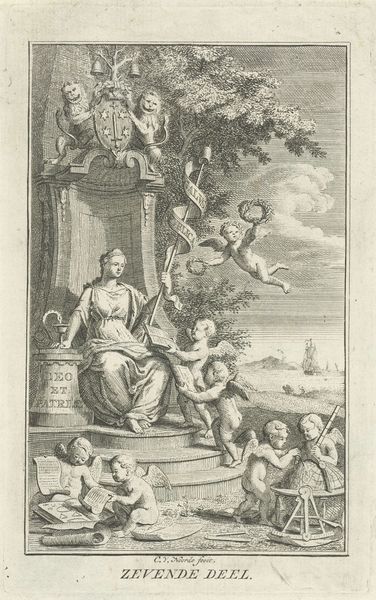
print, engraving
#
portrait
#
allegory
#
baroque
# print
#
pen illustration
#
old engraving style
#
caricature
#
figuration
#
pen-ink sketch
#
history-painting
#
engraving
Dimensions: height 161 mm, width 100 mm
Copyright: Rijks Museum: Open Domain
Jacob Folkema created this print, Stedenmaagd van Haarlem, using an engraving technique. An engraver uses a tool called a burin to carve lines directly into a metal plate, and it’s the pressure of the hand that determines the depth and thickness of the lines. Look closely, and you can see how the richness of tone is achieved by the density of hatched lines. This painstaking process demanded rigorous training. Engraving was then at the heart of commercial printmaking. Notice how the image shows the allegorical figure of Haarlem, surrounded by putti, or cherubic figures. They symbolize virtues like wisdom, justice, and prosperity. These were qualities the city fathers hoped to cultivate through good governance. Prints like this one circulated widely, reinforcing civic pride, but also reminding viewers of the social order. The act of engraving here wasn't just about aesthetics; it was a means of communicating and reinforcing social and political values. Appreciating this context helps us understand that the value of the image lies in the cultural role that the print fulfilled at that time.
Comments
No comments
Be the first to comment and join the conversation on the ultimate creative platform.
